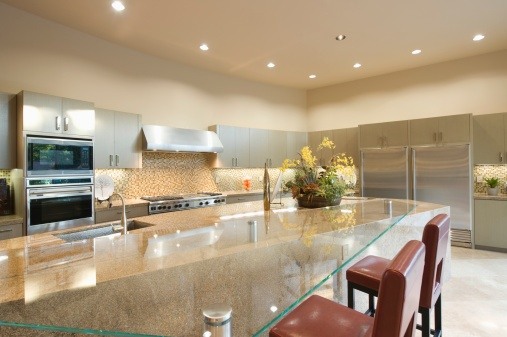 It’s one of those “anybody can do it” tasks, though not necessarily well or worthy of a Norman Rockwell scene: stringing a Christmas tree with lights.
It’s one of those “anybody can do it” tasks, though not necessarily well or worthy of a Norman Rockwell scene: stringing a Christmas tree with lights.
Since most people decorate only once a year, they seem more inclined to take safety shortcuts in the interest of keeping the task moving along so they can get to "the fun part": hanging the ornaments. But shortcuts involving electricity are always a mistake: Holiday lights trigger about 150 fires a year and cause more than $8 million in property damage, the National Fire Protection Association says.
Since Experts in Your Home want you, too, to become a safety expert in your home, learn how to light up your Christmas tree the right way.
Choose the Right Tree
Begin by following tree tips supplied by the Consumer Product Safety Commission. If you’re buying an artificial tree, make sure that it is fire resistant. Otherwise, if you’re buying a real tree, ensure that:
- It features full branches in a healthy shade of green.
- The needles are difficult to pull from the branches and do not break when you try to bend them between your fingers.
- The trunk is sticky to the touch with resin.
- A shower of needles do not fall when the trunk is tapped lightly on the ground. (If many needles fall, the tree is already too dry and poses a fire hazard.)
>>Contact Our Home Lighting Experts Today!
Place and Care for Your Tree Properly
- Place the tree far away from fireplaces, ovens, radiators and other heat sources. A warm room will dry out a tree rapidly and create a fire hazard.
- Position the tree away from doors, entryways and other high-traffic areas but near an electrical outlet.
- Shear about 2 inches from the trunk to encourage water absorption.
- Check the stand daily to ensure that it remains filled with water.
Choose Lights Carefully
- Use only lights that carry the Underwriter's Laboratory tag.
- If you can, purchase LED lights, which use less energy and run cooler than incandescent lights.
- Unpack your supply of lights and inspect them carefully for damage, especially cracked or broken sockets, frayed wires and loose connections. Throw these shock and fire hazards in the garbage. Do the same with every electrical decoration.
Light up Your Tree with Confidence
- Match the power need (amperage) of every light with the amperage rating of your extension cords.
- Adhere to the “rule of threes”: string together no more than three sets of lights and plug no more than three sets of lights into one extension cord to reduce the risk of overheating.
- Plug as many lights as possible into an outlet or a power strip to minimize the number of extension cords.
- Once everything is in place to your satisfaction, ensure that the “resting place” of the cords is not pinched by doors, heavy furniture or other objects. The damaged insulation will become a fire hazard.
- Never hang electric lights on a metallic tree. The tree could become so charged with electricity that anyone who merely comes into contact with a branch could risk electrical shock or even electrocution.
- Always unplug a string of lights before replacing a bulb or fuse.
- Turn off all lights before going to bed or leaving home even for a short time. If by some chance an extension cord or a tree branch starts to smolder, you want every advantage to respond in a hurry.
Like many northern California homeowners, you might find a faulty outlet as you move along on all fours, plugging in lights and other decorations. If so, call the home lighting Experts or contact us online so we can come to your rescue. For us, that's worthy of a Norman Rockwell scene, too.







